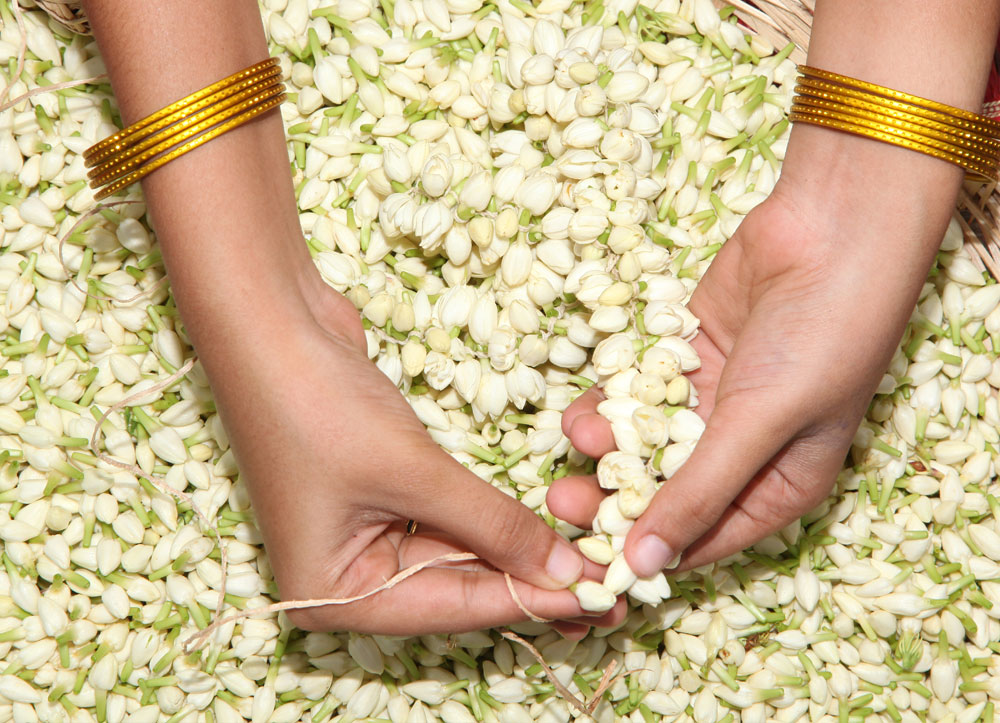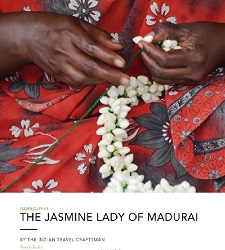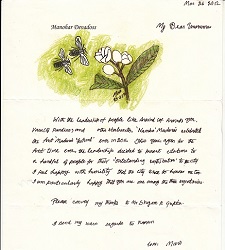Leaving India with a copy of Madurai Malligai wasn't easy. I was very lucky that my hotel in Madurai helped me to get a copy through Dr Kannan's publisher on the morning before I left. I enquired with a number of bookstores in Madurai with no luck and at the time, every online retailer was out of stock. I'm hoping this will change in the future because this is an excellent book for anyone interested in flowers and perfumery; I already have a list of friends I want to gift a copy
Source :
http://whatmenshouldsmelllike.com/2014/03/06/madurai-malligai-by-dr-uma-kannan-a-story-of-indias-jasmine-sambac/
CLAYTON/ USA
The jasmine, called Mallipoo in Tamil, is said to have risen to significance when the legendary king Paari spotted it during one of his hunting trips. So says a legend from one of the earliest Tamil poems of the Sangam Era, between 300 BCE and 300 CE. Another legend goes that the King of Ayodhya, Parthan devoutly worshipped Lord Shiva in a forest full of jasmine vines. Several other legends and mythological stories surround the significance of jasmine in the ancient texts. These tales allude to the prominence of the flower in the history of Tamil culture, which at the time flourished around the city of Madurai. The matron of Madurai, the Fish-eyed Goddess, Meenakshi, who is a manifestation Goddess Parvati, is adorned with mallipoo every night, in a ceremony that prepares her for her time with her husband, Lord Shiva. A commonly held belief is that the goddess’ love for the flower makes the unique variety of jasmine grown in and around Madurai, called Madurai Malligai, the most coveted one of all. Read More...
Source : https://www.kamalan.travel/narratives/jasmine-lady-of-madurai
THE INDIAN TRAVEL CRAFTSMAN
"Madurai Malligai" was fully need to me and I so thoroughly enjoyed listening to it.... the way of your presentaion. Unfortunately I am unable to see the photographs. However, all those who see the book, spontinously say that the pictures are beautiful and caputure the ethos of the book. The whole of Madurai, I am sure, is proud of you.
Source :
http://www.maduraimalli.com/testy3.pdf
Dr. Manohar Devadoss






























